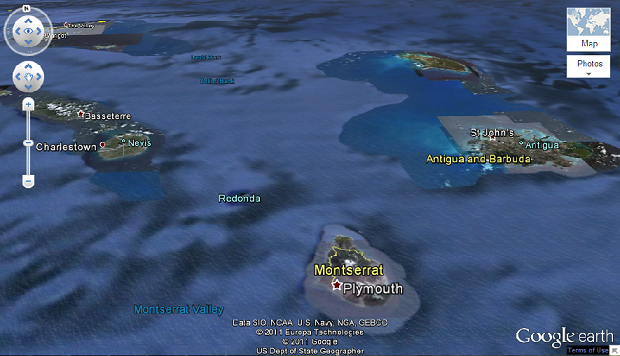And in the blink of an eye, two weeks have passed since my last blog update. Teaching has gone into full swing now, and the response so far from students has been encouragingly positive. I have been planning the work scheme for music to be taught as a subject to the Years 7 to 9 in Montserrat Secondary School, in conjunction with the Ministry of Education. If my objective is to expose students here to as varied styles and genres of music as possible (as was originally the idea), then delivering music education through the classroom has certainly achieved that.
The approach here that I have taken has differed quite greatly from the UK - students here have no formal music education in schools, and don't receive regular instrumental lessons, if any at all. This is unlike back home, where you could hold a creative music workshop made up of any type of student participants, and almost all of them would certainly have had music taught to them in the classroom and have had weekly instrumental tuition. This, of course, makes it easy to explain what the concept of
kotekan found in
Balinese gamelan is all about and attempt to recreate elements of that on their instruments. Over here, however, I've had to start from the very basics of pulse, rhythm, note values and notation before asking them to identify the time signature of a Scottish
reel (which went down quite well), for example. And this could have, in my opinion, been only effectively delivered in a classroom setting.
The Year 9s have been having a go at film music, looking into different styles of today's Hollywood composers, differentiating between elements of film music such as motifs, underscoring and scene music, as well as coming up with storyboards of their own before acting scenes out while accompanying them on instruments, live. Given how there is no cinema located on Montserrat (the only one was previously destroyed by the volcano), I was slightly apprehensive about the relevance of this module. But I had nothing to worry, as I later found out that given the prevalence of broadband internet on the island, a lot of my students regular watch films through downloading or streaming (as one does?) them online. Ironically, I get power outages here about twice a week - but the wifi in my house never fails me. This reminds me of the time last summer when I was in Romania leading students to
volunteer on a summer school programme at an orphanage in a village somewhere in the middle of Romania - and the village had blazing fast broadband internet, but no running water.
I have made slight progress on the instrumental front. I have managed to unearth approximately 50 recorders from the Ministry of Culture, as well as get another adaptor for the keyboards - that makes it two now. And, adding on to the
Virtuoso piano app on my iPad and iPhone, as well as the piano app on my
TA's
Kindle Fire (bless her - she downloaded a piano app for her tablet to help me out with the 'shortage'), that makes five accessible 'keyboards' in the classroom.
Sir George Martin has just ended his month-long sojourn in Montserrat, which he and Lady Judy embark on every year. They own a property here called
Olveston House - a beautiful house that, when not occupied by the Martins in January, is used as a guest house which has hosted the likes of Sting, Eric Clapton and Paul McCartney during their expeditions here to record at
AIR Studios.
George & I in Olveston House on the eve of his departure.
On a slightly different note, Montserrat Idol has commenced - yes, even this island has not escaped the television sensation scheme first concocted up by Mr Simon Cowell himself. However, given that there is no television broadcasting station in Montserrat, the only way to watch the competition is to, well, go watch it live yourself. It's held every Saturday evening at this cosy beach bar in Little Bay called
Soca Cabana, and the competition is now in it's second year (if I remember correctly). The first prize? Round-trip airfare to Antigua, two-night stay at the
Catamaran Hotel in Antigua's Falmouth Harbour, a
Blackberry Torch and automatic placement in the finals of the Antigua Idol contest (they have it there too!) for this year.
Also, as inevitable as the sun rises and sets everyday, I have embarked on some steel drums playing myself, having joined a
steelpan ensemble on the island called Volpanics (loving the pun here). I've assigned myself to
tenor pans duty, only because my limited coordination skills can only allow me to focus when are the notes are one pan instead of being spread out over two or three pans. That, and I just love playing the melody anyway! Will update my progress on here as I, hopefully, improve.

















